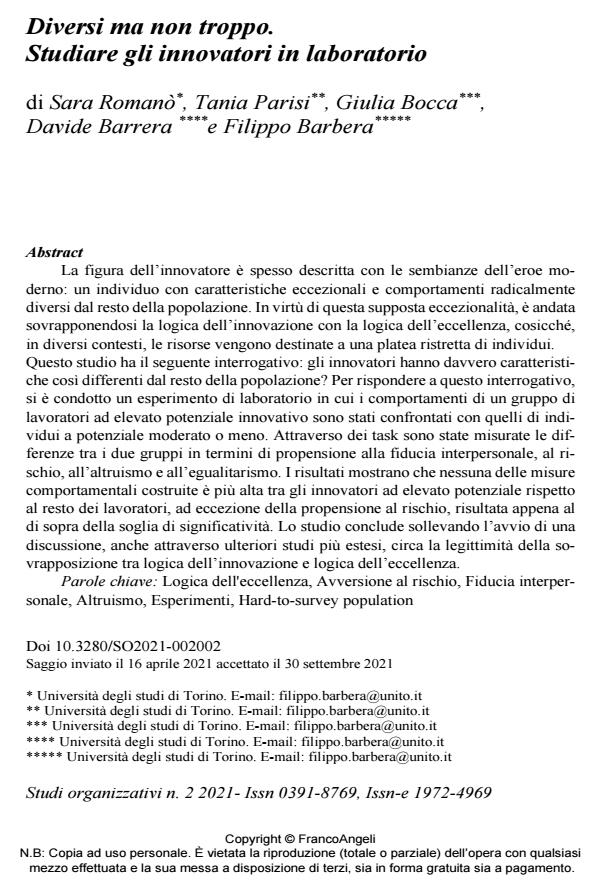Behavioral Characteristics of Innovators. Evidence from a Lab Experiment
Journal title STUDI ORGANIZZATIVI
Author/s Sara Romanò, Tania Parisi, Giulia Bocca, Davide Barrera, Filippo Barbera
Publishing Year 2021 Issue 2021/2
Language Italian Pages 29 P. 38-66 File size 491 KB
DOI 10.3280/SO2021-002002
DOI is like a bar code for intellectual property: to have more infomation
click here
Below, you can see the article first page
If you want to buy this article in PDF format, you can do it, following the instructions to buy download credits

FrancoAngeli is member of Publishers International Linking Association, Inc (PILA), a not-for-profit association which run the CrossRef service enabling links to and from online scholarly content.
Innovation has been receiving increasing attention by researchers, businessmen/women and policy makers. Innovators are often considered as individuals endowed with exceptional characteristics who behave radically different from the rest of the population. This assumption has gradually led to a systematic overlap between the logic of innovation and the logic of excellence. Accordingly, in many contexts few selected individuals receive much of the available resources. However, the association between innovativeness and excellence lacks robust empirical support. This study aims to fill this gap by observing whether innovators actually display unique behavioral characteristics. To this end, we carried out a lab experiment to gauge differences in risk aversion, interpersonal trust, altruism, and egalitarianism between individuals with high innovation potential and individual with moderate or limited innovation potential. According to the literature, risk aversion and interpersonal trust are two key characteristics of innovators, whereas the other two dimensions have been generally overlooked. Results show that, except for risk propensity that is just above the threshold of significance, none of the behavioral measures is higher among high-potential innovators. These results are especially surprising as we selected groups maximizing difference in innovation potential, thereby introducing a conservative bias.
Keywords: Innovation studies; Logic of excellence; Risk aversion; Interpersonal trust; Altruism; Lab Experiments; Hard-to-Survey populations
Sara Romanò, Tania Parisi, Giulia Bocca, Davide Barrera, Filippo Barbera, Diversi ma non troppo. Studiare gli innovatori in laboratorio in "STUDI ORGANIZZATIVI " 2/2021, pp 38-66, DOI: 10.3280/SO2021-002002